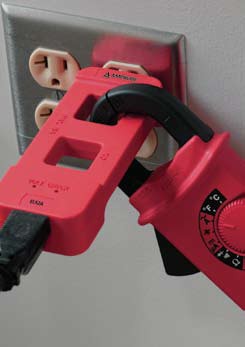I taight those classes last year.
I recalled how the second year contained the most difficult, driest, terrifying sections, the ones heavy on theory. So. I set out to address the issue directly.
It's hard to teach about something you can't reall see. The first challenge is to prove it exists. I did so with three demonstrations:\
- an automotive timing light (to prove induction exists)
- a thermin (musical instrument) to again prove the existence of indusctive capacitance in a
musical way;
- a type of 'lava lamp' that has a static discharge within - you can see the effects of changes in inductive capacitance.
Then there is the matter of impedance. For that, I got an ordinary bench grinder, a DMM with an amp clamp, and a "Kill-A-Watt" plug-in meter. I separated the wires in the power cord of the grinder for a short section, so I could fit the amp clamp around them.
You can do all manner of things with that grinder. You can see the amp surge on start-up. You can measure resistance, then compare to actuat impedance (read from the Kill-A-Watt). You can measure the voltage generated after toy unplug it, and the wheels are still spinning. Since the grinder has a work light (incandescent) attached, you can demonstrate the lack of impedance in the light bulb.
The challenge is to get the students to grasp that both time and motion (of the field) have a bearing on how electricity works. If I teach this again, I hope to set up an O-scope so they can see the actual phase angle shift.
There are other things that can also be useful. For example, I had a very old fluorescent light that had but a small transformer and a starter for a 'ballast.' This let them see what's hiding in those gooey black ballasts they've been changing.


